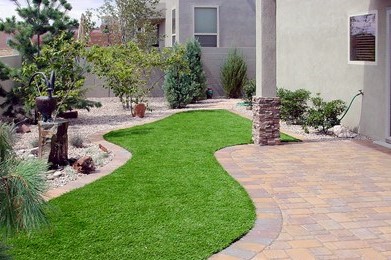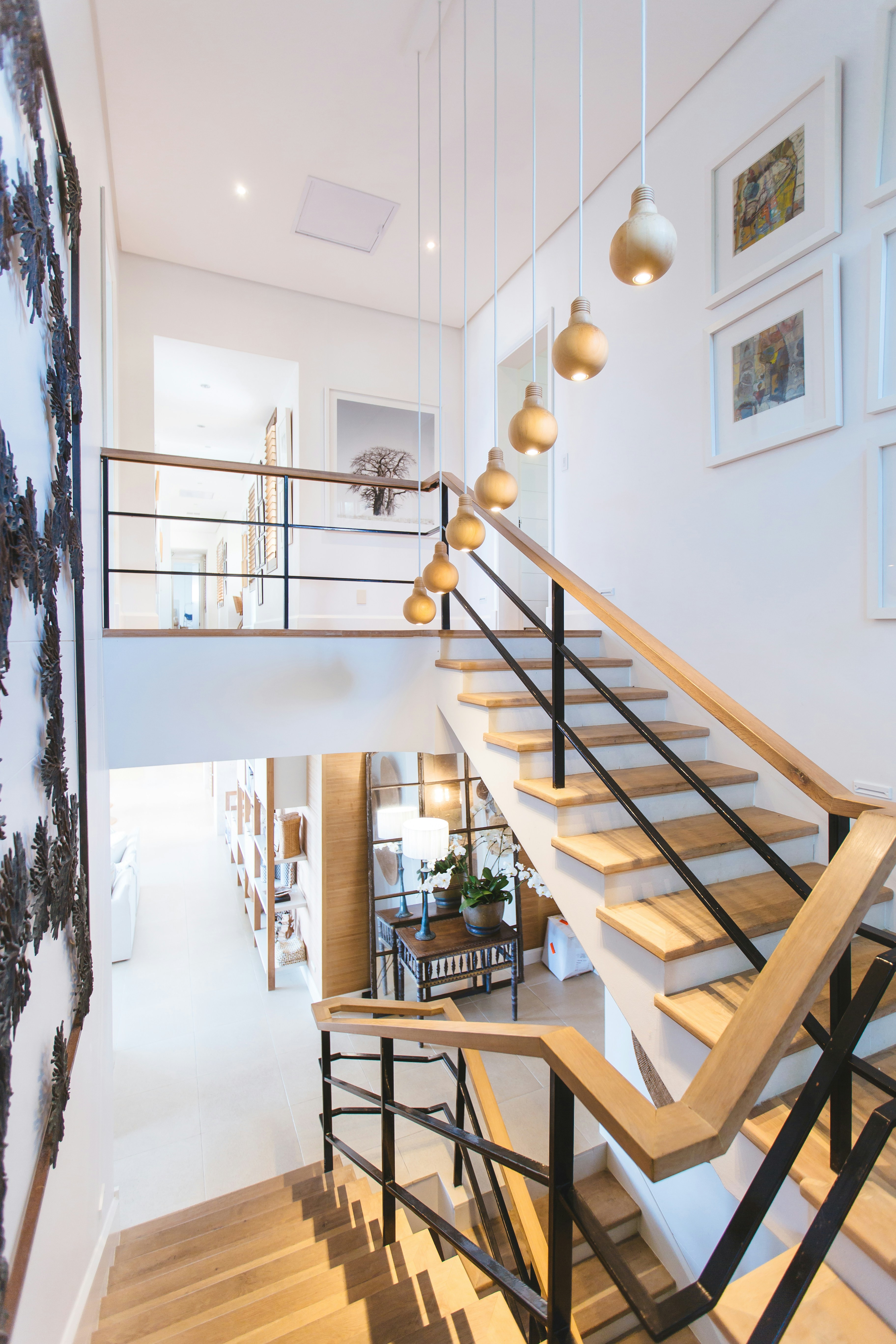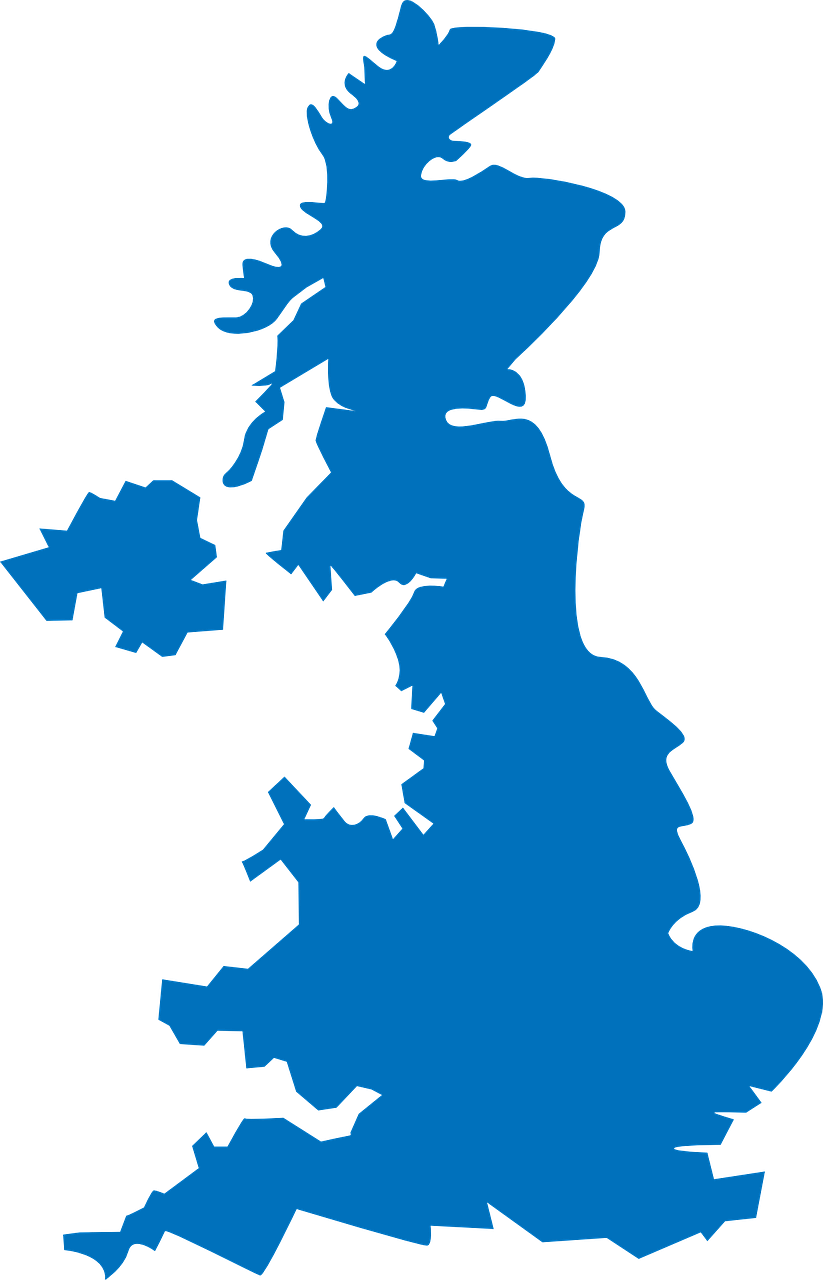As beautiful as natural grass looks, it also takes a lot of time and effort to keep it in good condition. When it comes to the weekend, or any time away from work, the last thing you want to do is spend hours trying to maintain it. Yet, you still want a great looking lawn in your backyard, so what are the alternatives?
The great news is that artificial grass provides the perfect solution. Where it once used to look cheap and plastic-looking, it now resembles real grass so closely that it’s far harder to tell the difference. If you’re shopping around for an artificial lawn then read through our expert guide to find out everything you need to know.
Contents
Types of Artificial Grass
What To Consider When Buying Artificial Grass
How Much Does Artificial Grass Cost?
Should I Lay The Artificial Grass Myself?
How To Lay An Artificial Lawn
Artificial Lawns For Pets
Artificial Grass Maintenance
Artificial Grass Underlay
Different Names For Artificial Grass
Types of artificial grass
To create the perfect artificial lawn it will help to know what the differences are between the various types. This is one of the most commonly asked questions by our customers and we always base our advice on what it is being used for and the type of surface it is being laid onto. Read on to see the three types available and what they are best suited to.
Nylon artificial grass
This is both the stiffest and strongest type of artificial lawn available to buy. This is best suited to areas that will experience high levels of foot traffic as the material will always keep its shape. You will notice this is also reflected in the price which is far higher than the alternatives.
Additionally, it also performs extremely well when exposed to high temperatures for long periods of time as it doesn’t melt or lose its stability. From a distance it looks like grass but it is definitely not as soft to the touch.
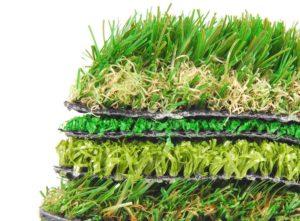
Polyethylene artificial grass
Customers often remark how life-life polyethylene artificial grass is, and it is the type most commonly found in back gardens. Not only does it feel soft to the touch just like real grass but its vibrant green colour looks amazing when laid down.
Polyethylene artificial grass is also used on sports fields for football, athletics and more and when combined with a secondary nylon thatch it can withstand much heavier footfall. There is very little maintenance required aside from the occasional rake or brush through.
Polypropylene artificial grass
The cheapest of the three options, one complaint we often hear is that it is also the least durable. This is why it is important to weigh up what the artificial lawn will be used for and how much foot traffic it will be exposed to.
Due to the finer texture of the material, polypropylene artificial grass wears down at a faster rate even if there is less activity taking place on the lawn. If it is exposed to high heat then the blades can begin to melt and disfigure. However, this is a good choice if the artificial lawn is hardly ever used or even placed inside as indoor carpet.
What to consider when buying artificial grass
We always advise our customers to think about the long term use of their artificial lawn before making an investment. Going for the cheapest option may not be the best choice if you are looking for a replacement in 12-18 months time.
From our experience there are three aspects of artificial grass that need to be taken into consideration, each of which we discuss below.
Pile Height

The longer the pile the more lush and natural the artificial grass tends to look, which is why it is often the style chosen by homeowners. What should also be remembered is that a shorter pile height is not only comfortable underfoot but also gives the impression of a well maintained lawn. The range of artificial lawns we’ve seen range anywhere from 10mm to 50mm in length, so it all comes down to aesthetic preference.
Density
The density refers to two things: the number of stitches in the artificial grass and the amount and thickness of the yarn. For those who are thinking of laying an artificial lawn in a family home which will experience high levels of foot traffic, we recommend investing in a denser grass as this will stand up far better for a longer period of time.
Shade
Advancements in technology over the past 5-10 years mean that artificial grass is almost indistinguishable from the real thing. Whether you are looking for a vibrant, plush green lawn, or something a little more natural and flecked, you will be able to find a colour to suit your home.
How much does artificial grass cost?
Artificial grass is mostly supplied in rolls that are two or four metres wide, making it easy to lay down on the required surface.
Depending on the type of artificial lawn you are after, in terms of cost the prices usually range anywhere from £10 to £30 per sqm, which is comparable to the cost of purchasing carpet.
You may notice that real grass is cheaper – usually somewhere up to £7 per sqm – but from our experience it is the long term value artificial grass provides that will allow you to eventually save money. This is because you won’t have to invest in and maintain a mower, or purchase lawn feed. Not only will you reduce outgoings over time, but you will save much more time due to how low maintenance artificial grass is.
Should I lay artificial grass myself?
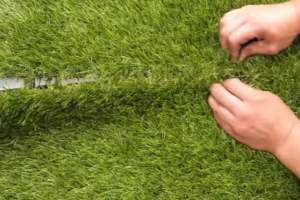
There may be an initial additional cost involved if you choose to hire a specialist to lay the artificial grass for you. While this may increase the price at the front end, hiring an expert will mean it is installed properly, rather than attempting it yourself and then have to pay even more to have it fixed.
The cost of hiring a local landscaper or specialist company will vary depending on the type of artificial lawn you want installed and, of course, the area size you need the lawn laid on top of. This isn’t to say that there aren’t some home DIY experts who cannot lay the turf down in their home, but we would recommend this as an option only for those who have the experience of doing so previously.
How to lay an artificial lawn
If you do feel confident enough to install an artificial lawn in your home or anywhere else, there are some standard guidelines to follow to ensure a perfect finish. We’ve spent years advising private and commercial property owners to lay their artificial lawns and have distilled the process down to seven essential steps:
1. Plan the area
Before starting anything, it is essential to fully plan the area that is set to be covered with the turf. The first thing to do is to make sure that any water pipes or cables are set below the digging depth.
You can start to remove the turf down 5cm by either using a spade or turf cutter, removing any large stone, bricks or any other large or obtrusive debris. If there are drainage problems in the area, then lay down a type 1 stone.
2. Create an edge
If the area features no perimeters for the artificial grass to lay up against you will need to install an edging system. This is essential for two main reasons. Firstly, it acts as a restraint for the aggregates that are used in the groundworks. Secondly, it serves as an anchoring point for the perimeter of the artificial lawn.
Once you have chosen the system (we would recommend Everedge) use a hammer and a piece of wood to knock it into the soil, leaving approximately 3cm exposed above ground level. A drop of around 4cm needs to be chamfered on the outer perimeter which will create a more natural look.
3. Lay down the base
If granite dust is not an option then put down about 6mm of sharp sand. To spread the dust or sand across the application area, use a piece of timber which will help smooth out the surface.
For those opting for sand make sure the depth is no more than 20mm and use hardcore to level out any noticeable imperfections (which means anything over 20mm) before the sand is applied.

4. Apply the weed membrane
Once you have finished compacting the based you can then start to apply the weed membrane. We have seen a number of poorly installed artificial lawns over the years that have not applied this element. The reason why it is so important is that it stops the growth of weeds while also allowing clear the drainage of water.
After this has been completed you can trim any waste membrane from the edges of the area. If any joining needs to be done then simply overlap the edges before attaching them together with gaffer tape.
5. Install the artificial grass
Carefully unroll the artificial grass over the required area and ensure the weed membrane is not removed. Think about how it will look when seen from inside the house and in most cases this means running it from the bottom of the garden up towards the property.
Once you have it in place, trim away any excess artificial grass. To make sure you create a truly smooth edge, change the blade every 3-5 metres.
6. The finishing touches
The application of kiln sand to the artificial lawn should be the final part of the job. We recommend using one of three things to get this done right. Use either a leaf blower, lawn fertiliser spreader or a stiff brush to mix it into the lawn. 6-8kg of sand should be laid per metre of artificial grass.
The laying of sand will help create an extremely natural finish to the lawn. To get the very best result we advise you brush the artificial lawn before, during and after the sand has been laid. Do this on the same day the grass is installed and in dry conditions, not when it is raining.
7. Joining the turf (optional)
This isn’t always a requirement but if it is the starting point is to butt the two surfaces together to ensure they are both running in the same direction. Along the length of the join, fold back between 30-40cm on each side, before trimming 20-30mm from each of the edges, making sure you cut between the tuffs.
Ensuring the tape is positioned shiny side down, unroll it along the full length of the join. Then apply the tape in two lines to the edges of the backing before carefully folding one side of the artificial grass onto the joining tape, and then slowly folding over the other side of the join. For the best results, leave a gap of around 2-3mm between the two sections. Once they have been joined, lay down weighted planks onto the length of the join as this will help create an invisible join, before waiting around 2-3 hours for it dry.
Artificial lawns for pets
One of the most common reasons for installing artificial grass is to create a space for pets to spread their legs outside of the home. Many of our readers tells us that they live in urban areas with no parks close by and creating a space in the backyard that both their cats or dogs can enjoy can make a huge difference to their wellbeing and general health.
We’ve already gone through the advantages of installing an artificial lawn, but what are the benefits for your pets?
Pets adapt almost straight away

Cats and dogs enjoy comfortable spaces just as much as humans. If your lawn surface was hard, or you previously had concrete flooring in place, replacing it with soft, dense artificial grass will see them take to it very quickly. The added bonus is that an artificial lawn can’t be dug up or get muddy, keeping it in good condition and creating no mess in the garden or the home.
It can help your pet’s confidence
For smaller dogs in particular, the world at large can seem quite intimidating and overgrown grass can make it hard for their little legs to move around. Artificial grass doesn’t grow, so this will help your dog to venture outside, gaining more exercise and encourage them to feel more relaxed outside. The same applies to bigger dogs too as some are less confident than others. Cats are never short of confidence so this doesn’t apply to them!
Shorter artificial grass is easier to clean
Cleaning up after a cat or dog is never the nicest of jobs at the best of times, especially if it is mixed into longer grass. Shorter lengths of artificial grass are usually the best option for high footfall areas and this makes it easier to clean should your pet do their business on the lawn.
Artificial lawns can handle your pet’s habits
Like humans, pets find a spot they like and always return to. Artificial grass does compact and spring back to position but if the same spot is regularly compacted then it will need a bit more care and attention.
Pets will regularly return to the same spot to do their business, so to keep it clean wash these areas with warm soapy water. No matter how many times it is washed an artificial lawn will not discolour or die.

Artificial grass maintenance
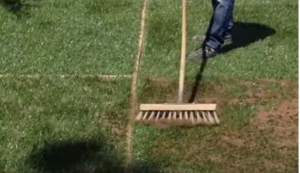
The feedback we often hear from homeowners about the reason for buying artificial grass is usually very similar. In the main people buy the product because it is a low maintenance solution that looks stunning and requires nowhere near the same level of aftercare that real grass does.
This means not having to spend time watering, mowing or feeding the lawn. It simply needs to be cleaned on occasion and cleared of leaves by using a leaf blower or a plastic rake. Once done, you have more time to yourself to enjoy your garden and how amazing it looks.
Cleaning artificial grass
Family pets always love to spread their legs and roam across the garden whenever possible. If your cat or dog urinates on the artificial grass at any time then we advise pouring white vinegar onto the area. This can be left for about five minutes before being rinsed by warm water.
Another good habit we always advise homeowners to get into is hosing down the artificial lawn with plain water once a week. This will keep it clean and in great condition for the long term.
A brief round-up of artificial grass maintenance
- Rinse your artificial lawn once a week with plain water
- Use either a stiff broom or a lawn rake to remove leaves, dirt or dust
- Using a handled brush or broom, groom the lawn by going against the grain to help each blade remain standing vertically.
Artificial grass underlay
Over the years we’ve seen artificial grass laid on everything from soil to concrete, tarmac and even wooden decking. What needs to be considered is the type of underlay used in each of these scenarios, which we go into more detail in this section.
Underlay used on soil
The use of a weed membrane is the most important part of the entire installation process. We always recommend using a substantial sub base that consists of a weed membrane, 3-5cm of type 1, a layer of sharp sand and an additional layer of weed membrane if required.
Laying artificial grass over an unstable surface will usually mean it will shift over a period of time, which then becomes uneven. A properly prepared sub base will keep the lawn stable and in good condition and it pays to do the job properly given the investment you are putting into it.
Shock pad underlay

This foam underlay is used on non-soiled surfaces on material such as concrete or wooden decking. We are always asked whether a shock pad underlay should be installed underneath artificial grass. The material is designed for use in play areas, especially in spaces where there is play equipment, as it can help cushion the fall for children as they run around.
You will also have to take pets into consideration. If pets urinate the shock pad will absorb the bacteria rather than draining it out. This increases the likelihood of bacteria transfer and an odour developing in warmer weather.
In truth there is rarely a need for shock pad underlay in the average residential home that doesn’t feature a soiled garden or an existing lawn. In this case a compacted sand base enables the artificial lawn to drain efficiently and has enough ‘give’ to absorb a trip or fall onto the surface. However, if there is a chance of a child falling from height then we would recommend installing shock pad underlay.
Alternative names for artificial grass
As you are doing your research you will no doubt have come across a few different terms that may have confused you. Even reading through this guide you may have been unsure as to the difference between artificial grass and an artificial lawn.
The good news is there is no difference at all. Much like the use of the word artificial turf. The one different term you must be aware of is Astroturf. This is one of the earliest types of artificial grass that was on sports pitches, looking plastic and not like real grass at all.
This has evolved over time into the artificial grass we refer to today, which looks like and feels similar to the real thing. The terms below all mean the same thing, so do not worry if you see a product or article that refers to any of these:
Synthetic turf
Synthetic grass
Fake turf
Fake lawn
Fake grass
Pet turf
Pet grass
Pet lawn
Added: September 10, 2018 12:22:49
